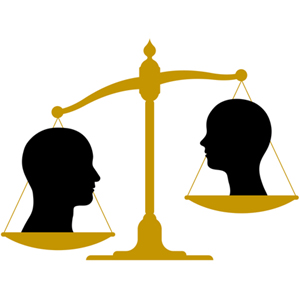Women underrepresented in lead trial lawyer positions, ABA study reports

Image from Shutterstock.
Female federal litigators serve as first chair far less frequently than men, and implicit bias is likely a cause, according to a study recently released by the American Bar Association.
The study, First Chairs at Trial: More Women Need Seats at the Table (PDF), pulled data from 2013 cases filed in the U.S. District Court for Northern District of Illinois. 558 civil cases, and 50 criminal cases, were randomly selected.
Out of the civil cases, 68 percent of all lawyers who made appearances were men, and 76 percent of the lead counsel were men. For the criminal cases, 67 percent of the lead counsel were men. Out of the criminal cases that went to trial, 79 percent of the lawyers serving as lead counsel were men.
Women lawyers comprise 36 percent of the legal profession, according to the study. it also notes that 17 percent of large law firm equity partners are women, and women comprise 22 percent of Fortune 500 general counsel.
Sponsored by the American Bar Foundation and the Commission on Women in the Profession, the study also examined case types. It found that women appeared as lead counsel in 41 percent of real property cases, but only in 15 percent of the contract cases.
Also, the study found that in civil cases involving the U.S. government, 31 percent of the lead counsel for the government were female.
In criminal cases, 69 percent of the women who appeared as lead counsel represented the government, and 31 percent represented defendants.
Family responsibilities may play a role in opportunities for women lawyers, the study notes, but it also notes potential bias from senior partners and clients, as well as inappropriate comments and treatment from judges and opposing counsel. It mentions a notion that women litigators show too much emotion, but male litigators who show the same level of emotion are often seen as zealous advocates who are passionate about their cases.
“All of these issues apply with even greater force” for women litigators of color, according to the study.
The ABA’s Commission on Women the Profession plans to work with the profession and identify how women can better get litigation training and courtroom experience.
Law schools, the study notes, should specifically teach how women can navigate implicit bias in the courtroom, and let women who want to be litigators know that government jobs probably offer them the most first-chair opportunities.
Clients should be mindful about staffing diversity, according to the study, and judges should think more about appointing qualified women to serve as lead counsel, liaison counsel and steering committee members in multidistrict litigation class actions.
And women who want litigation careers, according to the study, should actively seek trial assignments. It also advises being aware of “gender dynamics in the courtroom.”
“Body language is critical, including maintaining an outward appearance of calm, even in moments of stress and pressure,” the study states. “Women need to ‘own’ the courtroom with their presence and also with their voices.”



